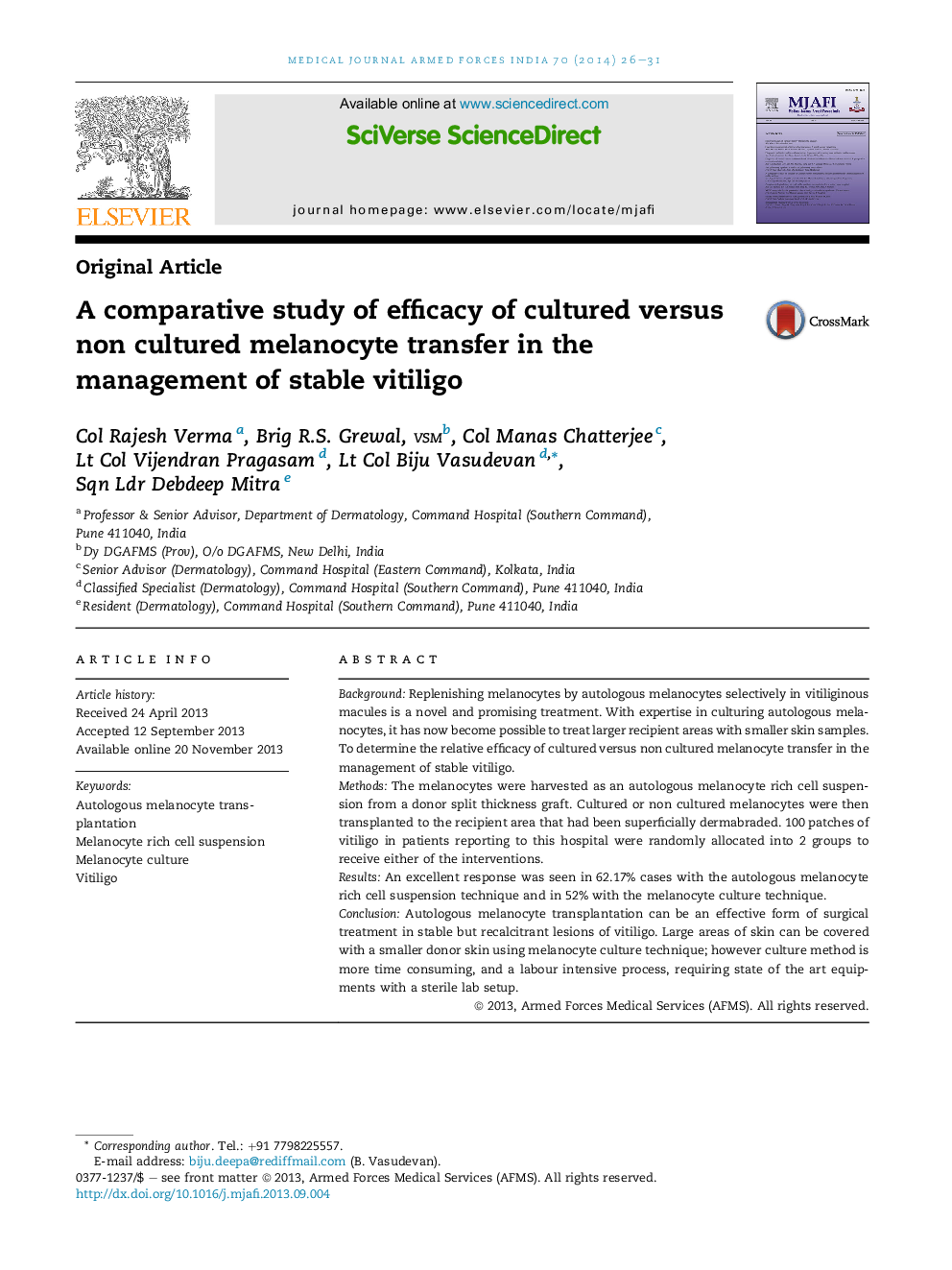| Article ID | Journal | Published Year | Pages | File Type |
|---|---|---|---|---|
| 3161276 | Medical Journal Armed Forces India | 2014 | 6 Pages |
BackgroundReplenishing melanocytes by autologous melanocytes selectively in vitiliginous macules is a novel and promising treatment. With expertise in culturing autologous melanocytes, it has now become possible to treat larger recipient areas with smaller skin samples. To determine the relative efficacy of cultured versus non cultured melanocyte transfer in the management of stable vitiligo.MethodsThe melanocytes were harvested as an autologous melanocyte rich cell suspension from a donor split thickness graft. Cultured or non cultured melanocytes were then transplanted to the recipient area that had been superficially dermabraded. 100 patches of vitiligo in patients reporting to this hospital were randomly allocated into 2 groups to receive either of the interventions.ResultsAn excellent response was seen in 62.17% cases with the autologous melanocyte rich cell suspension technique and in 52% with the melanocyte culture technique.ConclusionAutologous melanocyte transplantation can be an effective form of surgical treatment in stable but recalcitrant lesions of vitiligo. Large areas of skin can be covered with a smaller donor skin using melanocyte culture technique; however culture method is more time consuming, and a labour intensive process, requiring state of the art equipments with a sterile lab setup.
